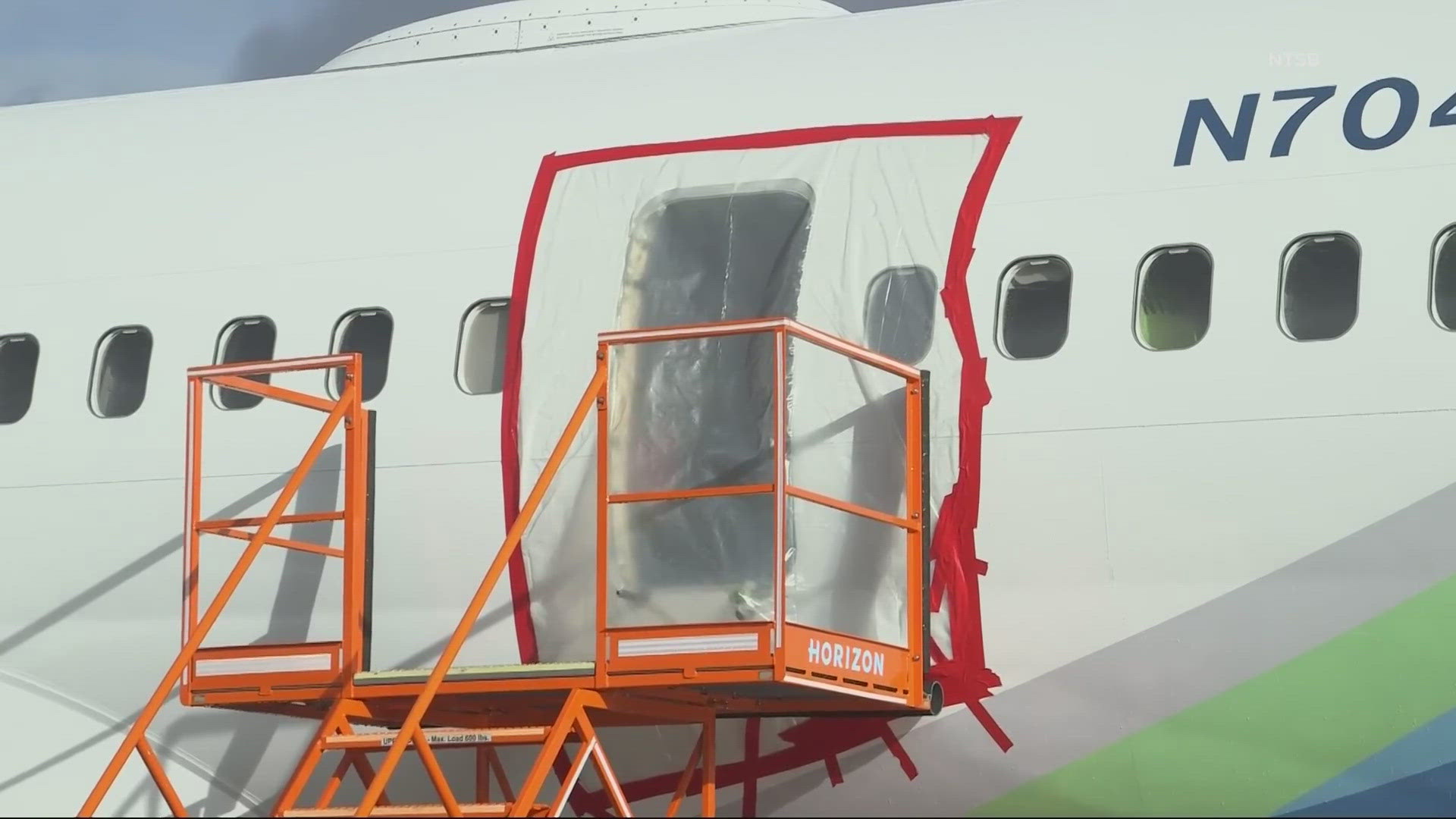WASHINGTON D.C., DC — The National Transportation Safety Board will kick off a two-day investigative hearing Tuesday morning into the door plug blowout that happened on a Jan. 5 Alaska Airlines flight just minutes after the Boeing 737 MAX 9 took off from Portland International Airport, causing rapid depressurization and forcing an emergency landing.
Boeing had already been facing scrutiny over safety issues, particularly for the MAX line, and the blowout set off a fresh firestorm for the company, especially after a preliminary investigation showed that the door plug was missing four key anchor bolts. The plug had been removed at Boeing's factory to repair a manufacturing defect and was apparently reinstalled without the bolts before being delivered to Alaska Airlines last fall.
This week's hearing won't be the final word from the NTSB — the agency said it can take up to 18 months after an accident to complete an investigation — but it will offer an in-depth recap of the investigation's work and the evidence gathered so far, and it will put a public spotlight on the Boeing executives lined up to serve as witnesses.
The NTSB displayed the recovered door plug for the media last week, and said the component would be a key part of the hearing, which the agency describes as a "fact-finding step" to gather sworn testimony. Once completed at some point in the next year, the investigation will include a determination of probable cause and recommendations to improves safety.
The hearing will run from 9 a.m. Eastern Time to 7 p.m. Tuesday and Wednesday, beginning Tuesday morning with an introduction of the exhibits the NTSB has gathered and an opening presentation from the investigator-in-charge.
The bulk of the rest of the proceedings will divided into four panels, each of which will call witnesses including executives from Boeing and Spirit AeroSystems, the contractor responsible for fuselage manufacturing including door plug installation. Federal Aviation Administration officials and a representative from the International Association of Machinists will also be witnesses on some of the panels, according to an agenda released by the NTSB.
The first panel will focus on the manufacturing processes for the Boeing 737 MAX 9 in general, including the inspection processes at both Spirit and Boeing, as well as the training and retention of mechanics, processes for tracking problems and the organizational structure of the two companies.
The second panel on Tuesday afternoon will focus on the specific plane involved in the January incident, both in terms of its original manufacturing and the later procedure in which Boeing workers removed the door plug and then later reattached it.
The third panel on Wednesday morning will focus on safety and quality management systems at Boeing, and the final panel on Wednesday afternoon will focus on the FAA's oversight of Boeing, including how FAA audits are scheduled and how oversight methods have changed over time.

